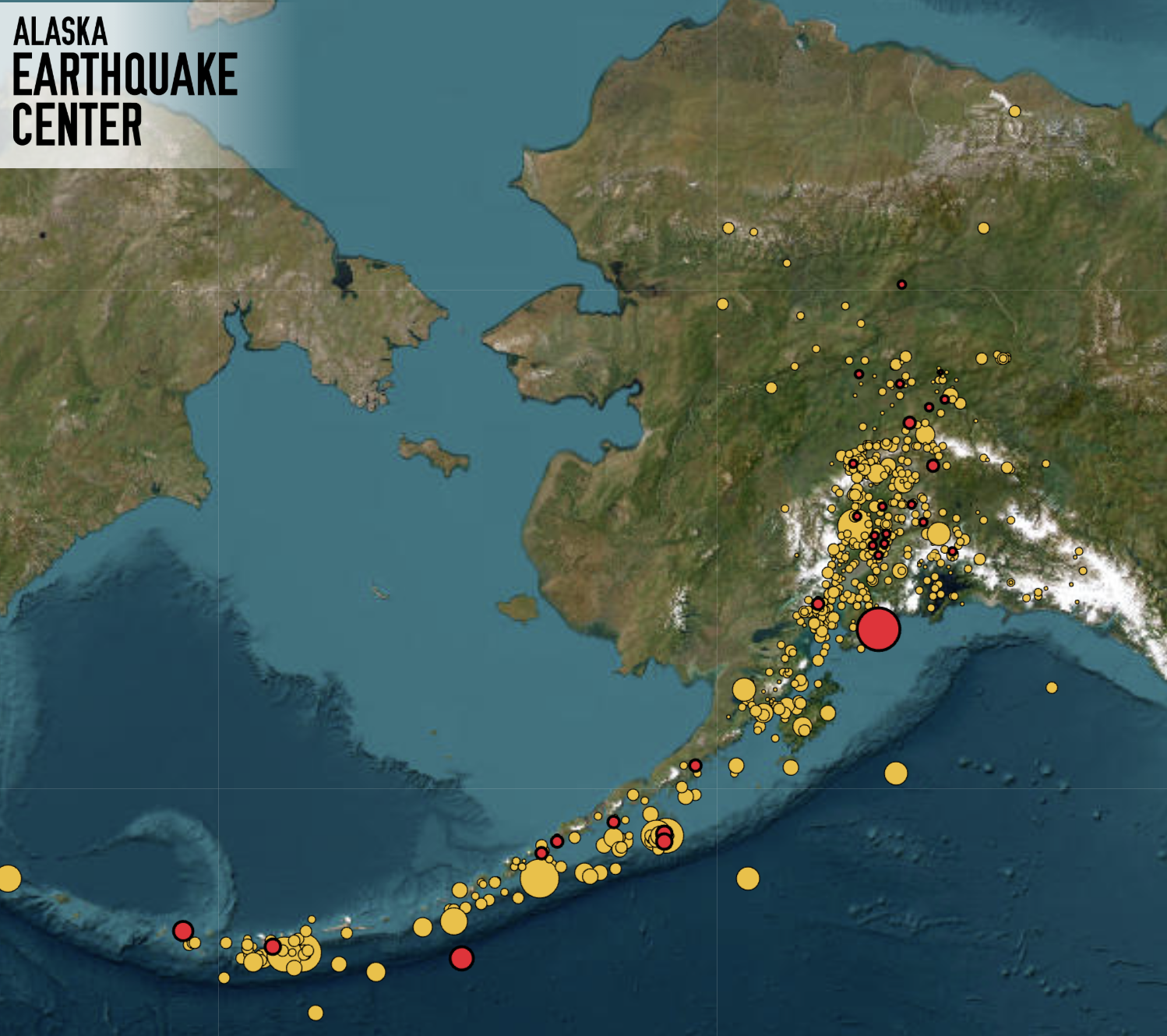
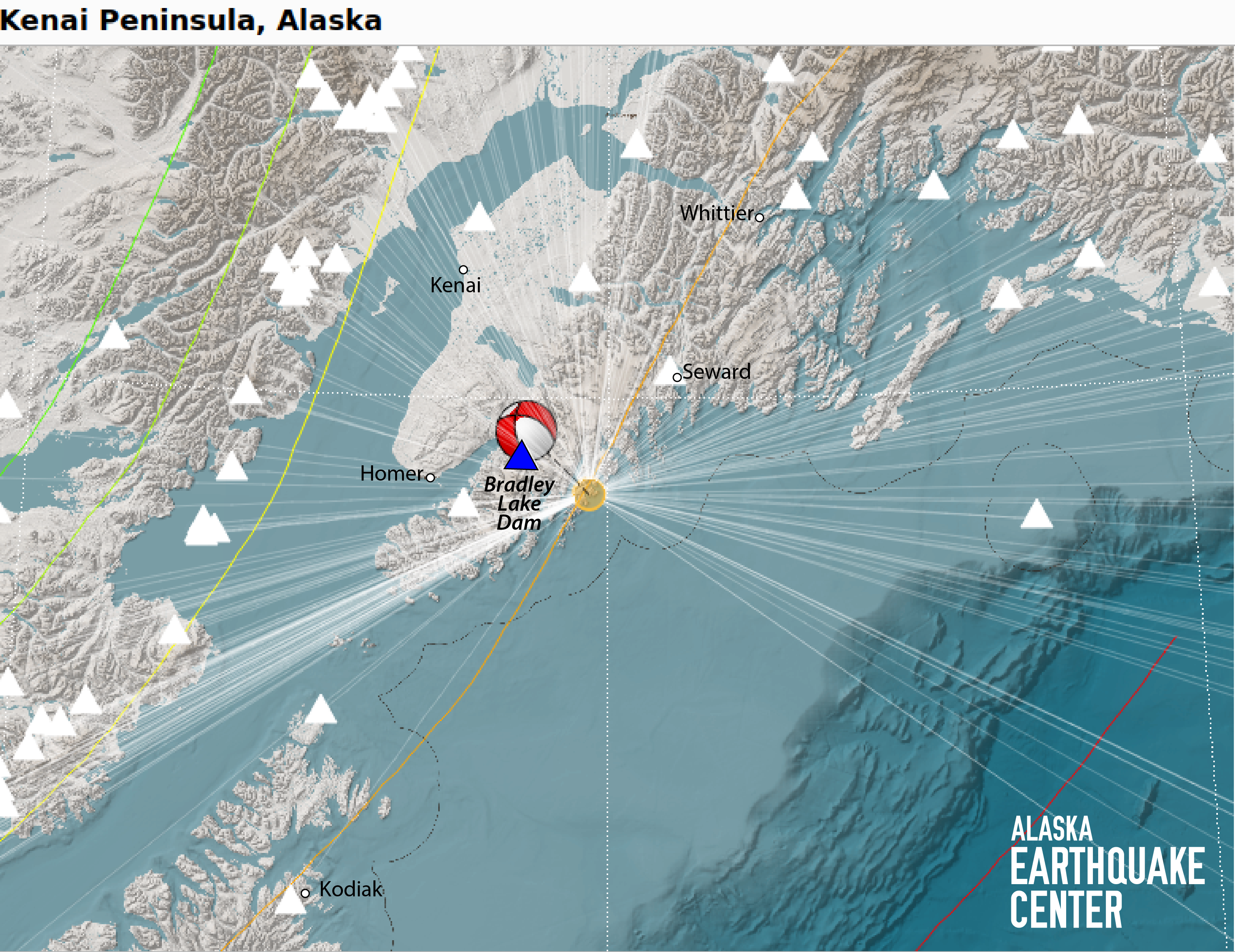
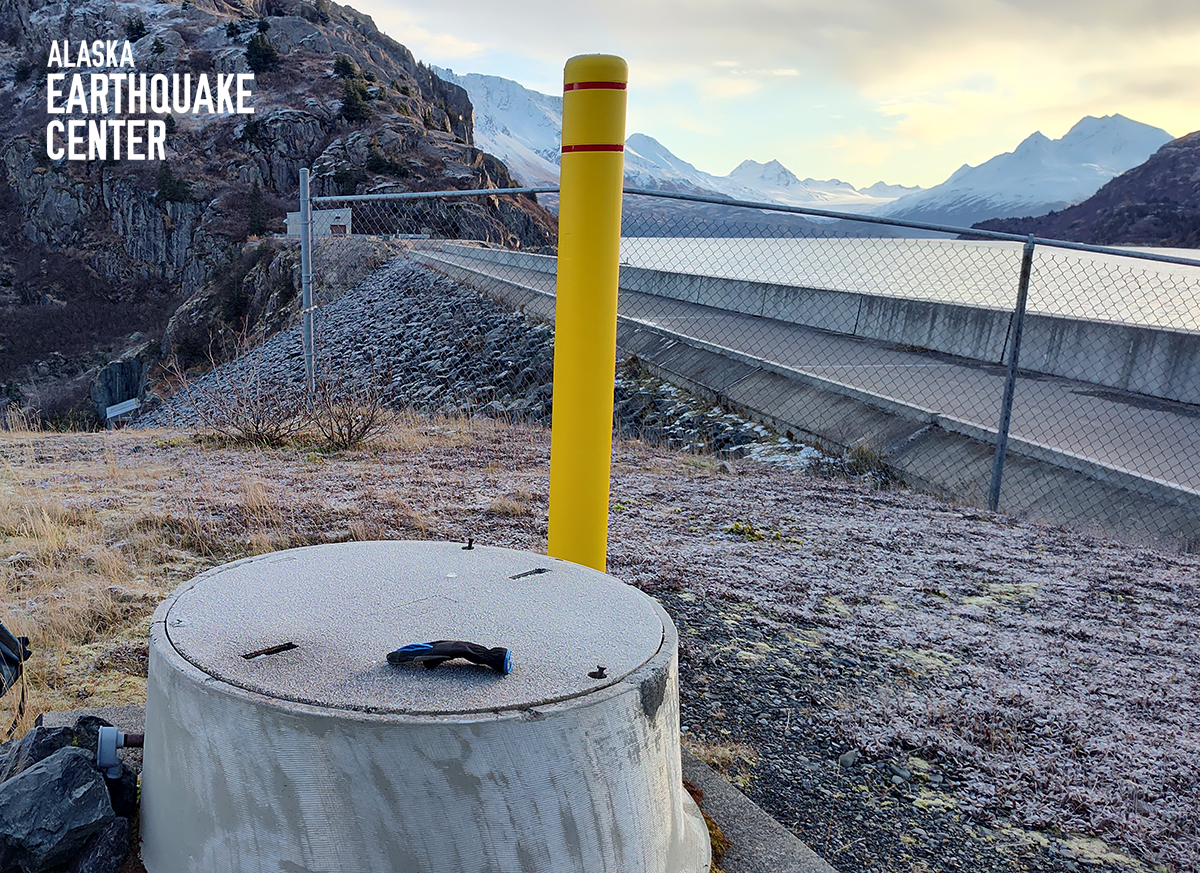
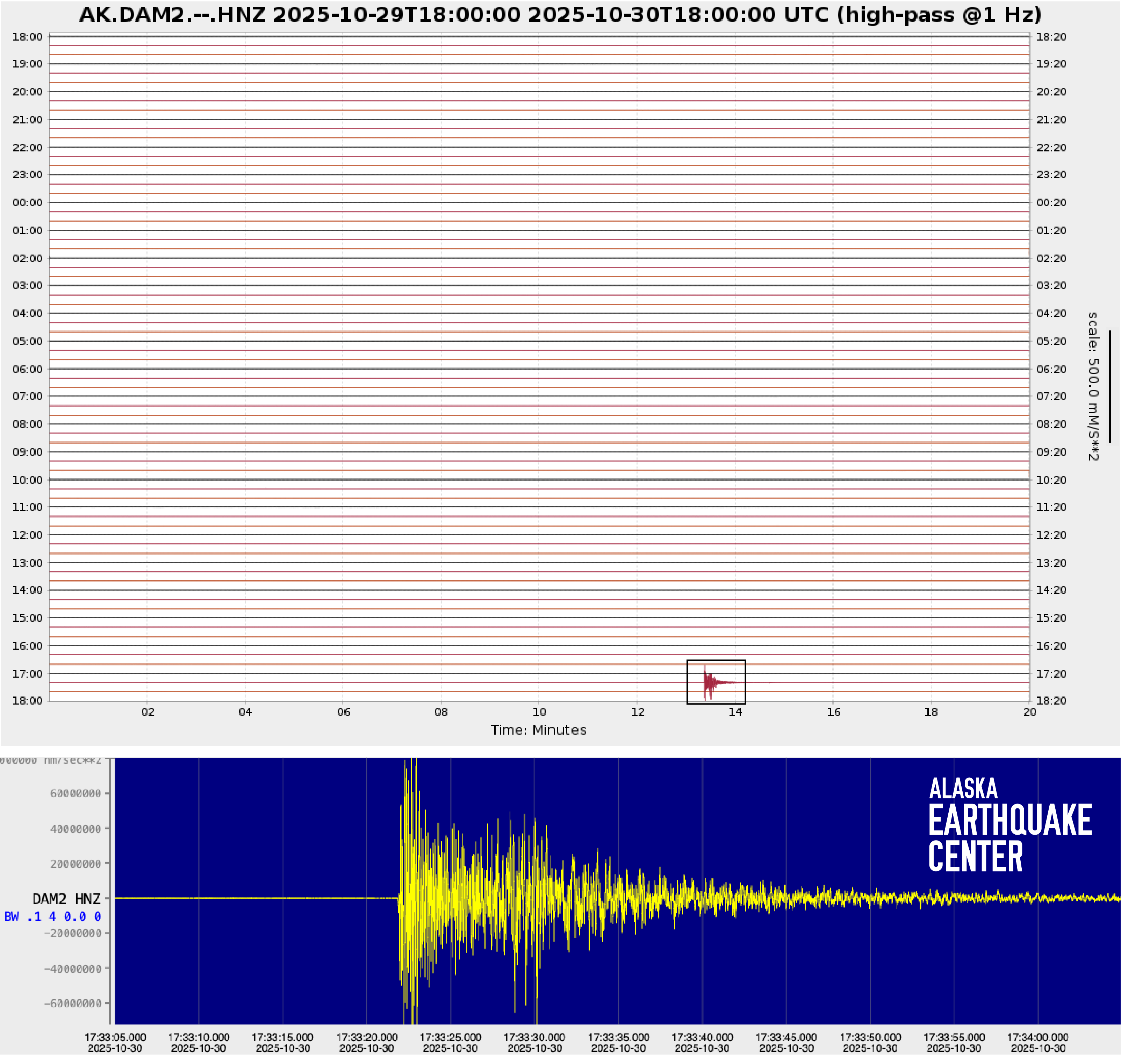

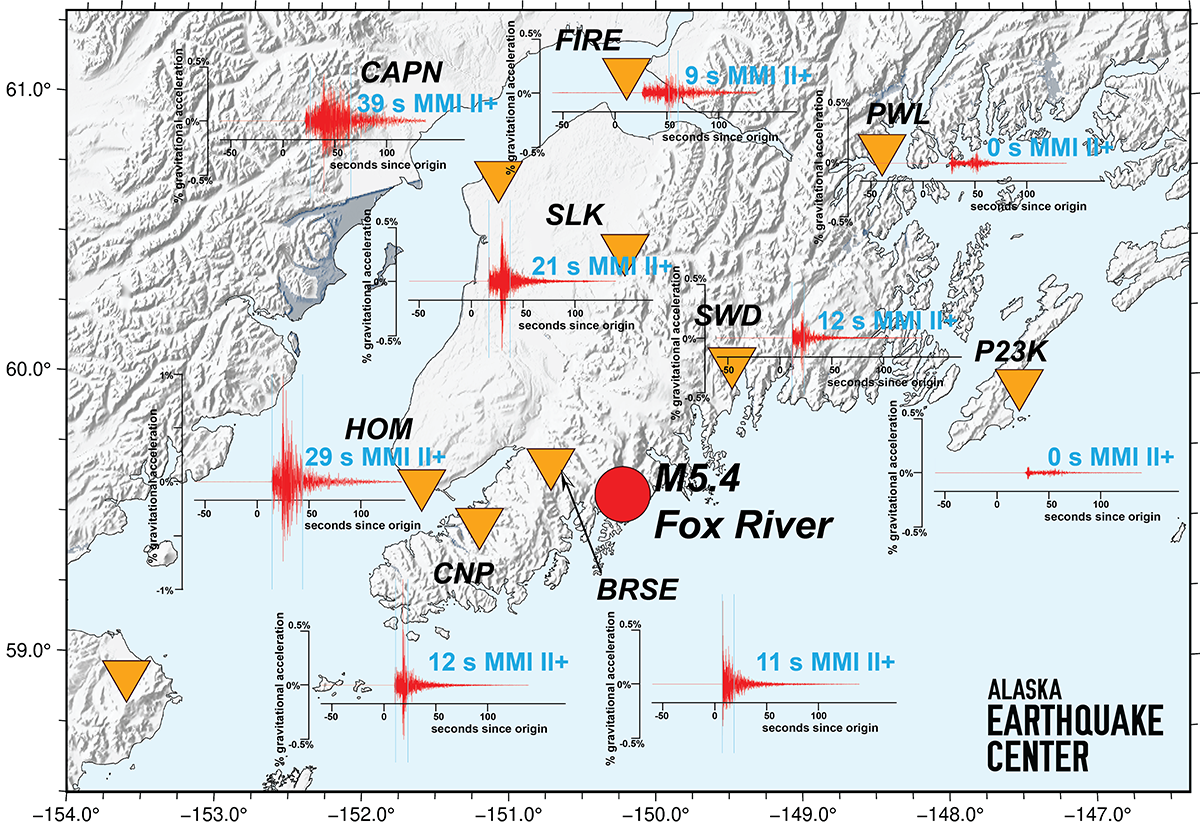
A magnitude 5.4 earthquake south of Seward (Figure 1) at around 9:30 am on October 30, 2025 was reported as felt for about 100 miles (165 km) around the epicenter. Notably, the closest Alaska Earthquake Center seismic stations to the event are located at Bradley Lake Dam (Figures 2, 3, 4). These stations were installed starting in 2008, in a partnership with the Alaska Energy Authority.
Magnitude 5 and above earthquakes are not unusual in the Kenai Peninsula, which has experienced almost 400 of these in the past 40 years (Figure 5). More than 2,000 people filled out a “Did You Feel It?” viewable on the U.S. Geological Survey's map interface, and conversation about individual experiences played out through the day over the Alaska Earthquake Center social media threads. Most reported that they thought the shaking lasted 10 to 30 seconds, which is verified by the shaking recorded by surrounding seismic sites (Figure 6). How anyone experiences shaking depends on many factors, which we have previously described here.
Lots of small surprises
Some residents were surprised by what they felt. One person in Kasilof reported that the shaking “seemed rather long.” It was also unusual for their location—“Where our house sits seems to be sheltered from feeling quakes as strong as other people in the area. We definitely felt this one. It started with a slow shake, one big jolt, followed by a few smaller jolts, then the gentle rolling/swaying.”
Homer resident Kasey Aderhold, a project manager with the EarthScope Consortium and a seismologist, wasn’t sure at first what was happening. “I felt a bit of a jostle, but we’ve had storms lately so that wasn’t unusual. Then it kept going and I realized it wasn’t windy. A few seconds in, I thought it might be the start of something bigger.”
Being well-versed in protective steps during an earthquake, Aderhold grabbed the cat sitting on her lap, then, “I slid off my chair to the floor and I covered my head and neck under the desk where I was working.” After the shaking stopped, she looked around to see if her Halloween decorations were still in place (they were), made a mental note to move the house plants from a shelf above her bed, and called some family and friends. Her sister, also in Homer, had some plates knocked over.
Large earthquakes in other parts of the world have occasionally caused catastrophic dam failures. Having seismic stations nearby to monitor shaking is a good safety precaution–the Earthquake Center maintains four seismic stations at the Bradley Lake Dam. Coincidentally, our field team had completed their annual inspection of the stations just days prior to the quake. Their instrument upgrades helped ensure quality data was available to assess the strength and style of shaking, information that helps the dam engineers know immediately what emergency response may be needed.
Warnings can help, even for moderate events
Shakers like these, which rattle nerves but do little damage, are useful reminders that southern Alaska is prone to potentially large and devastating earthquakes. One Soldotna resident checked on her husband after the shaking stopped. “He was in our shop rotating tires.” The Alaska Earthquake Center is working towards bringing earthquake early warning to the state, a system that could generate widespread alerts seconds to minutes in advance of potentially damaging shaking.
While Android phones have been poised for the past year to potentially serve as earthquake sensors once waves reach people, the magnitude 5.4 Seward earthquake is the first that we have heard from anyone in Alaska to prompt such an alert. One Seward resident described in their “Did You Feel It?” report, “We heard the alert go off, and as I was waking up enough to find my phone, the quake got to us. We were confused, because we were in an RV, and it shakes when the dog walks through it. The alert just said something about a quake 44 miles away and we may feel it. It did help to solidify that it was a quake we were feeling, and not something trying to raid the pantry from the outside of the camper.”
Knowing whether shaking will continue and worsen is at the heart of why early warnings are so useful. The Alaska Earthquake Center continues to advocate both for maintaining a strong seismic network to rapidly detect earthquakes in Alaska, and for implementing an early warning system so that residents can know when they need to take protective measures.





